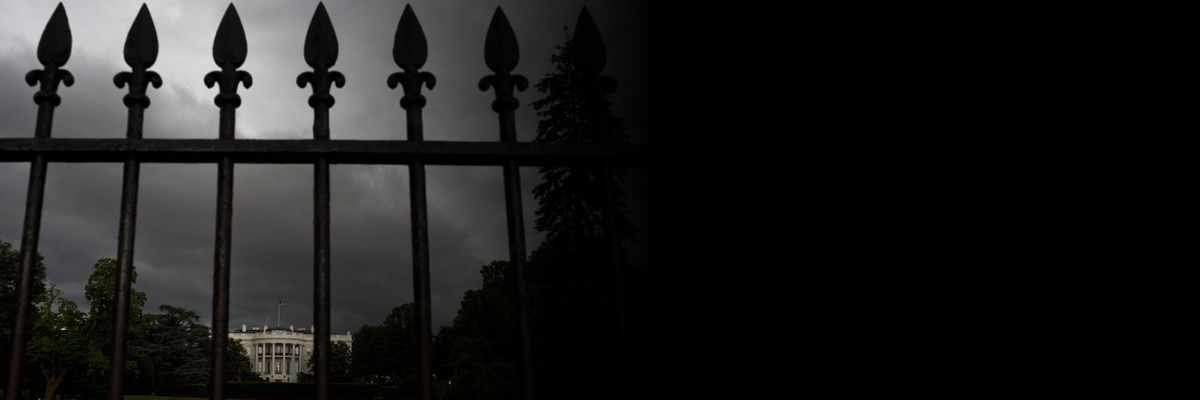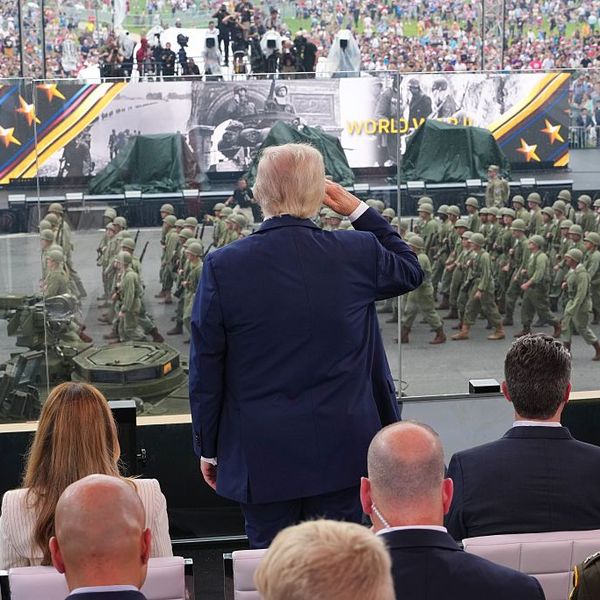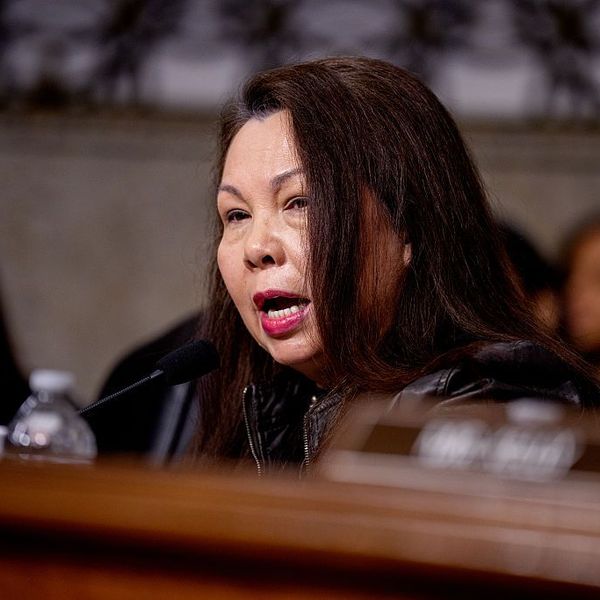In the most recent Coen brothers film, Inside Llewyn Davis, the protagonist -- a struggling Greenwich Village folksinger in 1961 -- is based, very loosely, on Dave Van Ronk, a little-known (outside folk music circles) but influential folk-singer who helped define the folk music revival of the late fifties, and mentored the young Bob Dylan and others during the early 1960s when what Van Ronk called the "great folk scare" took off. To understand the atmosphere of that music scene, the Coens relied on Van Ronk's memoir (coauthored with Elijah Wald), The Mayor of McDougall Street. Van Ronk recounts his serious involvement with various left-wing factions of the period.
The 1960s folk music scene was a chapter in a long story, one that began decades earlier and that continues today as a new generation of singers and songwriters connect -- directly and indirectly -- to the burgeoning progressive movements that are rippling across the country.
Seeger became the most influential folk artist of the 20th century. The songs he wrote, including the anti-war tunes "Where Have All the Flowers Gone?," "If I Had a Hammer," and "Turn, Turn, Turn," and those he has popularized, including "This Land Is Your Land," "Guantanamera," "Wimoweh," and "We Shall Overcome," have become global anthems for people fighting for freedom.
The freedom song movement was echoed in the performances of many African American and white artists as the civil rights struggle continued. A number of black rhythm-and-blues and soul performers who emerged from the world of gospel music spread the movement gospel to vast audiences, among them Sam Cooke ("A Change Is Gonna Come," 1964), Aretha Franklin ("Respect," 1967), James Brown ("Say It Loud -- I'm Black and Proud," 1968) and Marvin Gaye "What's Going On," 1971). Meanwhile, jazz artists like Max Roach, Art Blakey and Nina Simone created musical masterpieces with political themes that became permanent cultural legacies.
In the early sixties, a new generation of folk troubadours emerged, determined to link their music and the struggles for social justice. In the streets, folk clubs and campuses of major cities, singer-songwriters wrote "topical" songs about specific events, songs about the mood of alienation and anger in the country, and new protest anthems. Some performed at fundraisers and political rallies. Dylan, Joan Baez, Odetta and Peter Paul and Mary performed at the 1963 March on Washington, serving as a cultural bridge between the Southern movement and the emerging student movement on northern campuses.
Baez joined Martin Luther King on his 1965 march in Alabama, from Selma to Montgomery. She later joined Cesar Chavez during his twenty-four-day fast to draw attention to the farmworkers' union struggle, and she participated in a Christmas vigil outside San Quentin State Prison, California, to oppose capital punishment. In 1964, as the campus New Left was burgeoning, she sang at a Free Speech Movement rally in Sproul Plaza, leading hundreds of students to occupy the administration building at the University of California, Berkeley.
As the war in Vietnam escalated, Baez encouraged young men to resist the draft. In 1967 she was twice arrested for blocking military induction centers. She boldly performed the classic labor song, "I Dreamed I Saw Joe Hill Last Night," at the 1969 Woodstock festival, making the song and the Joe Hill legend available to young people decades after Hill's 1915 execution and after the song's creation by Earl Robinson in 1936. During the 1980s Baez spoke out against South Africa's apartheid system and featured Peter Gabriel's song about antiapartheid activist Steven Biko at her concerts. In 1987 she traveled to Israel, the Gaza Strip and the West Bank to sing peace songs with Jews and Arabs. She has devoted much of her performance career as a bridge between American audiences and freedom struggles in many parts of the world.
The second wave of feminism and the emerging environmental movements inspired performers, too. Leslie Gore's "You Don't Own Me" (1964) and Helen Reddy's "I Am Woman" (1971) were commercial pop hits with feminist themes, while a wave of "womyn's music" took root, led by Holly Near, Meg Christian and others, popularized via concerts, festivals and records. An outstanding catalog of feminist and gay rights music spanning decades can be accessed at Lady Slipper Music.
Ani DiFranco has created her own independent record company (Righteous Babe) to sustain her independence from corporate cultural machinery while building a passionate fan base. Ben Harper has used his celebrity as a folk/blues/soul/gospel/reggae/rock artist, with several Grammy awards to his credit, to support progressive political causes, including the 2004 "Vote for Change" concert tour to benefit MoveOn.Org, support for jailed Burmese prodemocracy advocate and Nobel Peace Prize winner Aung San Suu Kyi and No Nukes. One of the most prolific and engaged performers is David Rovics, whose hundreds of songs range from episodes of movement history to topical comment on immediate issues Roy Zimmerman uses parody and satire to create songs that both jab at ruling elites and inspire people to seek a better world.
Despite occasional media laments that "protest music is dead," a new generation of performers has been revitalizing music's links to movements, often self-consciously modeled on the folk singers of the past. Tom Morello has played an important role in building bridges between the music and movements of the Millennial generation. He began his career with the punk rock group Rage against the Machine, and now performs on his own, channeling the Guthrie and Seeger tradition. He was a constant presence at the protests in Madison, Wisconsin in early 2011 and at the Occupy Wall Street protests later that year. The Madison protests inspired daily solidarity sing-alongs in or at the Capitol building, sometimes resulting in arrests. Their Facebook page keeps running accounts of their daily activity and they have issued a CD of
Madison Solidarity songs -- parodies of classic labor and other songs
In May 2012, Morello fired up a large crowd at a Chicago protest rally organized by the National Nurses union and other progressive groups, calling for a "Robin Hood" tax and other demands. Morello has performed at rallies to support the burgeoning protests of low-wage fast-food and Walmart workers that have mushroomed across the country in the past two years. Some of Morello's labor songs can be found on union websites and on YouTube.
The Occupy movement inspired a great deal of music tied to the growing concern over widening inequality. This includes a four CD compilation of Occupy-related songs, many of which are accessible on YouTube and other internet sites.
The Occupy ferment inspired a lot of creative work by established performers, including singer-guitarist Ry Cooder, best known for reviving the careers of long-forgotten Cuban musicians through his film and record, The Buena Vista Social Club. In 2011 he released "No Banker Left Behind" and the following year put out his "Election Special" album that included such topical songs as "The Wall Street Part of Town," and "The 90 and the 9."
Many people identify the song "De Colores" with the United Farm Workers movement of the 1960s and 1970s. The recent upsurge of immigrant rights' protests has inspired a new generation of songs, including a two-CD compilation called Border Songs, about the plight of immigrants, by such veteran performers as Tigres del Norte, Tish Hinajosa and Lila Downs.
The Labor Heritage Foundation lists over 200 CDs devoted to songs from and about the labor movement. Based on that listing alone, it is safe to bet that there's never been so much labor singing, including a growing number of labor choruses in Seattle, New York, Washington, DC and elsewhere.
The emergence of YouTube and other new technologies has blurred the lines between commercial and non-commercial music and made it easier for performers to spread their music. It has also facilitated the global use of song in mass protest-- in Spain, Egypt and elsewhere -- and thus encouraged mass singing as part of these movements.
The new means of cultural production are complex and variegated. It is impossible to keep track of the many ways music and protest are now intertwined. What is undeniable is that whenever and wherever people are gathering, mobilizing and fighting back, the tradition of protest music will continue.


